How to Clean Green Marble — Complete Guide (Cleaning, Polishing, Stain Removal, Painting, Cost & Compliance)
How to Clean Green Marble?
Table of Contents
Toggle- How to Clean Green Marble?
- 1 — Why does green marble need special care?
- 2 — Daily cleaning: quick, safe routine
- 3 — Removing stains: identify the stain type, then act
- 4 — Fixing etches, scratches & restoration (DIY vs professional)
- 5 — How to polish green marble — step-by-step
- 6 — Can you paint green marble? (short answer: yes — but consider alternatives)
- 7 — How much is green marble? Price ranges & buying tips
- 8 — Safety, regulations & industry trends affecting finishing and fabrication
- 9 — Maintenance schedule & protective habits
- 10 — FAQ — Top 5 Google-trending questions (short answers)
- Semantic Closure: How / Why / Options / Considerations

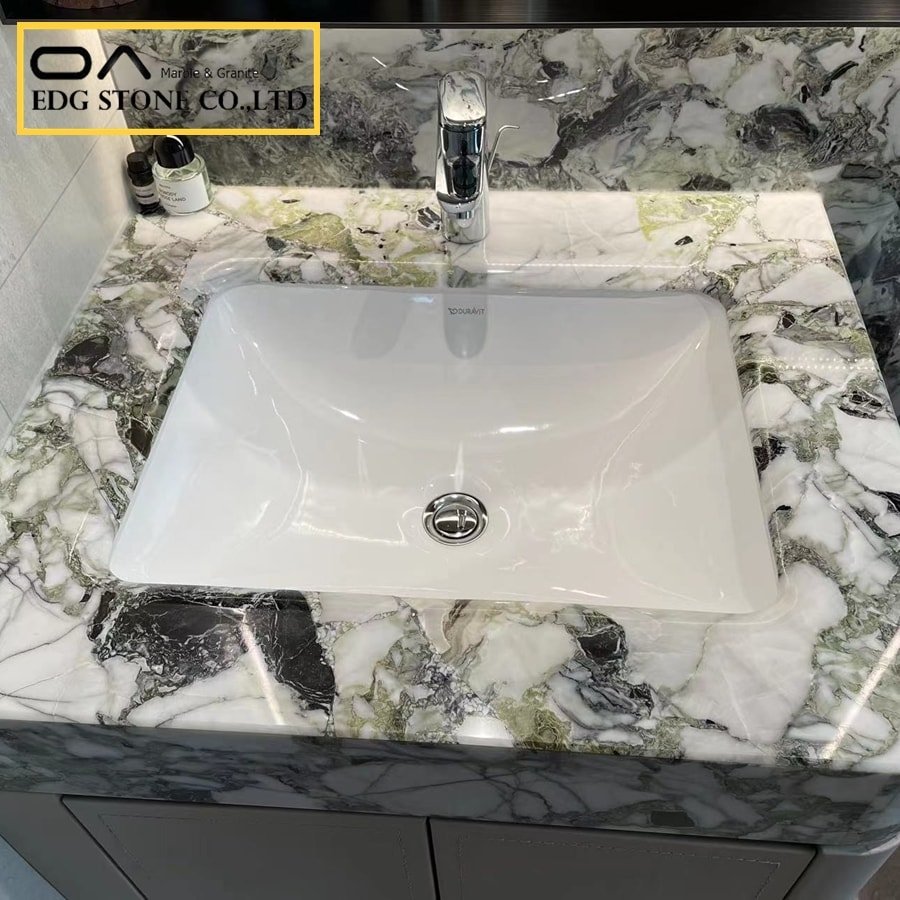
1 — Why does green marble need special care?
Green marble is usually calcareous (rich in calcite or dolomite) and therefore softer and more chemically sensitive than siliceous stones like granite. That means:
It stains more easily (porous) and etches when exposed to acids (vinegar, lemon, tomato).
Abrasive scrubbing and acidic cleaners will remove polish and create dull spots.
Treat it as a high-value natural surface — gentle cleaning, regular sealing, and prompt stain response will dramatically extend its appearance and life. (Routine-care basics are validated by stone-care authorities.)
2 — Daily cleaning: quick, safe routine
For everyday maintenance (counters, vanities, tabletops, floors):
Dust or sweep loose debris first (micro-scratch prevention).
Prepare a mild solution — warm water + a few drops of pH-neutral stone cleaner or a mild dishwashing liquid. The Natural Stone Institute recommends neutral cleaners formulated for natural stone. Rinse promptly.
Wipe with a soft microfiber or cotton cloth; change rinse water frequently to avoid redepositing grit.
Dry the surface with a soft cloth or chamois to avoid water spots. Architectural Digest and other home-care guides emphasize drying to keep shine.
What not to use: acidic cleaners (vinegar, lemon), bleach, generic bathroom cleaners containing acids or abrasive scrubs — these remove polish and cause irreversible etching.
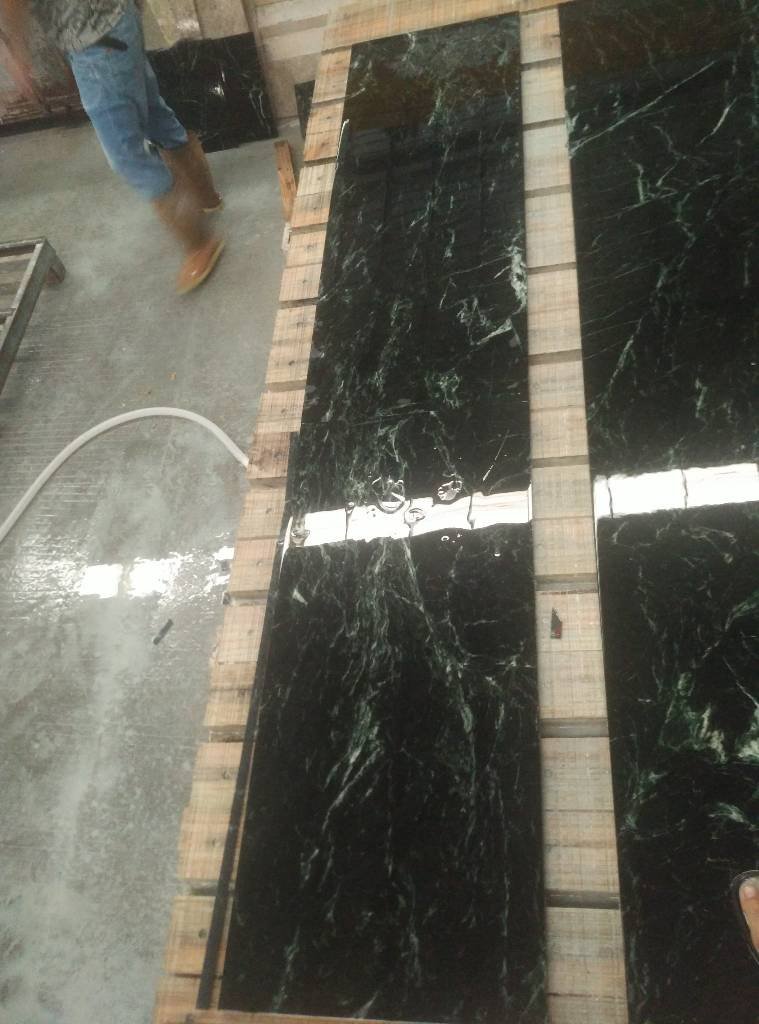
3 — Removing stains: identify the stain type, then act
Correct stain removal depends on what stained the stone. Always start by blotting spills — don’t rub.
Common stain types & treatments:
Organic stains (coffee, wine, tea, food): use a poultice of baking soda + hydrogen peroxide (to form a paste), apply ¼–½ inch thick, cover with plastic, tape edges, leave 24–72 hours, then remove and rinse. Repeat if necessary. Several stone-care guides recommend peroxide-based poultices for organic stains.
Oil-based stains (grease, oil, cosmetics): apply baking soda + acetone or commercial oil-removing poultices. Let it sit longer (48–72 hrs) as the oil migrates slowly.
Rust stains: Rust is notoriously stubborn — use commercial rust removers made for stone or consult a pro; do not use acid on calcitic marble without expert advice.
Ink: acetone-based poultices or rubbing alcohol may help; test in an inconspicuous spot.
General notes: poultices work by drawing stain particles into the paste as it dries. Always test any chemical on a hidden area first and follow the manufacturer’s and safety instructions. If in doubt, call a stone restoration specialist.
4 — Fixing etches, scratches & restoration (DIY vs professional)
Etching (dull, whitish marks from acid) is common on marble. For light etches, you can try:
Fine abrasive pads (0000 steel wool) or very fine grit polishing powders are applied gently with a soft pad; follow immediately with a neutral stone polish and buff. Several home-care sources mention superfine wool or specific polishing pastes.
For deeper etching, scratches, or chips:
Professional honing & repolishing is recommended. Pros use progressively finer diamond pads, mechanical polishing systems, and polishing powders to restore edges and surfaces. Attempting aggressive sanding at home can make the damage worse.
5 — How to polish green marble — step-by-step
There are two typical routes: DIY home polishing for minor dulling, or professional polishing for full restoration.
Home polishing (minor touch-up)
Tools: microfiber cloths, pH-neutral stone cleaner, 0000 steel wool or very fine polishing compound, then a marble polish.
Steps:
Clean the surface thoroughly and let it dry.
For light haze, use 0000 steel wool very gently in small circular motions — keep the area wet to avoid heat/burn.
Wipe clean, then apply a stone polish (manufacturer instructions) and buff with a soft cloth to restore sheen. Architectural Digest suggests gentle buffing after cleaning.
Professional polishing (when you need real results)
Pro services use diamond abrasives / diamond pads in progressive grit (e.g., 50 → 100 → 200 → 400 → 800 → 1500 → 3000) with water suppression and planetary grinders/polishers to reestablish a mirror finish. For honed finishes, pros stop at mid-range grits. Always hire a certified stone restoration professional for a full repolish.
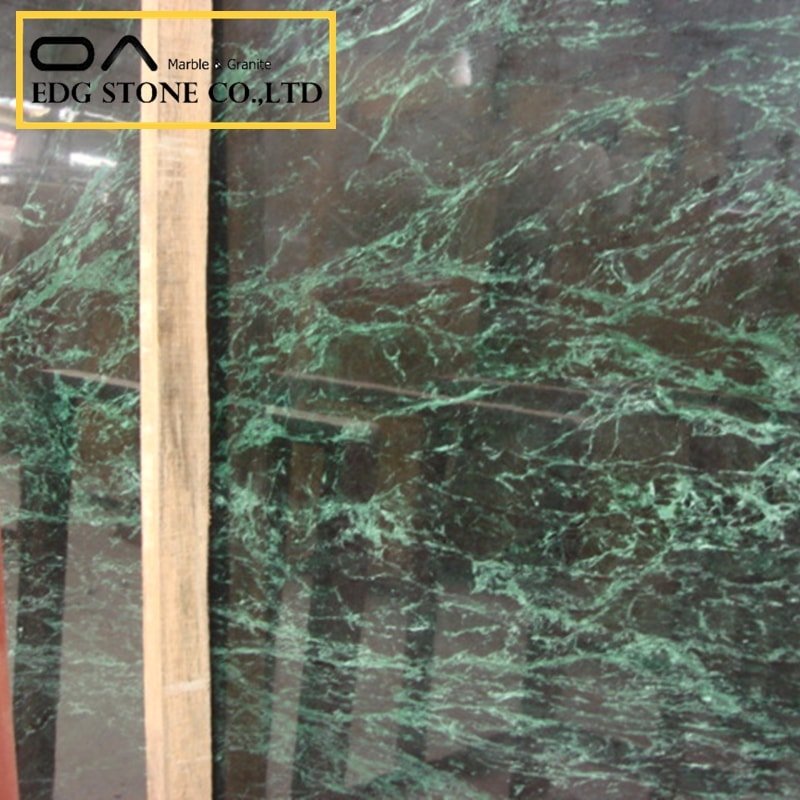
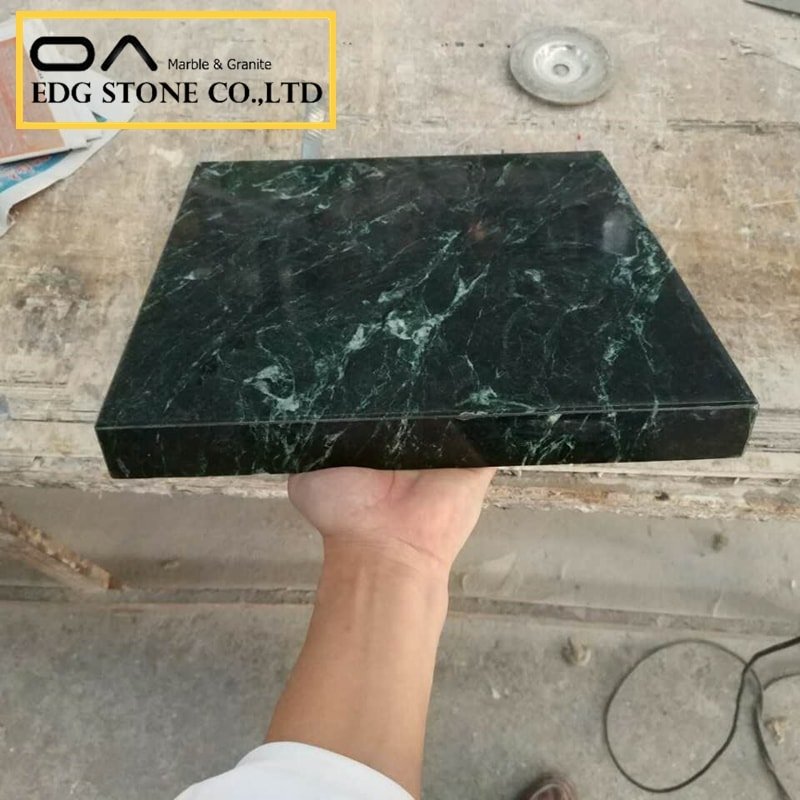
6 — Can you paint green marble? (short answer: yes — but consider alternatives)
Painting marble is technically possible, but whether you should depends on the surface and desired durability.
Decorative painting (faux marble, furniture, small accent pieces): Many DIY tutorials and professional guides show good results using proper surface prep: clean thoroughly, sand lightly, apply a bonding primer, paint with acrylic or latex (or faux-finishing techniques), then seal with a durable topcoat (polyurethane or epoxy). This works well for decorative items and low-use furniture.
Countertops & heavy-use surfaces: Painting countertops is a short-to-medium-term cosmetic fix. For durable results, you’ll likely need countertop epoxy systems or specialized kits (they can be fume-intensive and require careful prep). Even so, epoxy coatings can chip, and once applied, the original stone is covered permanently. Many professionals and homeowner guides caution that painted countertops are a compromise vs. replacing slabs.
If you plan to paint marble, test on a small area, use a high-bonding primer, and expect to recoat or repair over time. For valuable heritage or premium marble, painting is often discouraged.
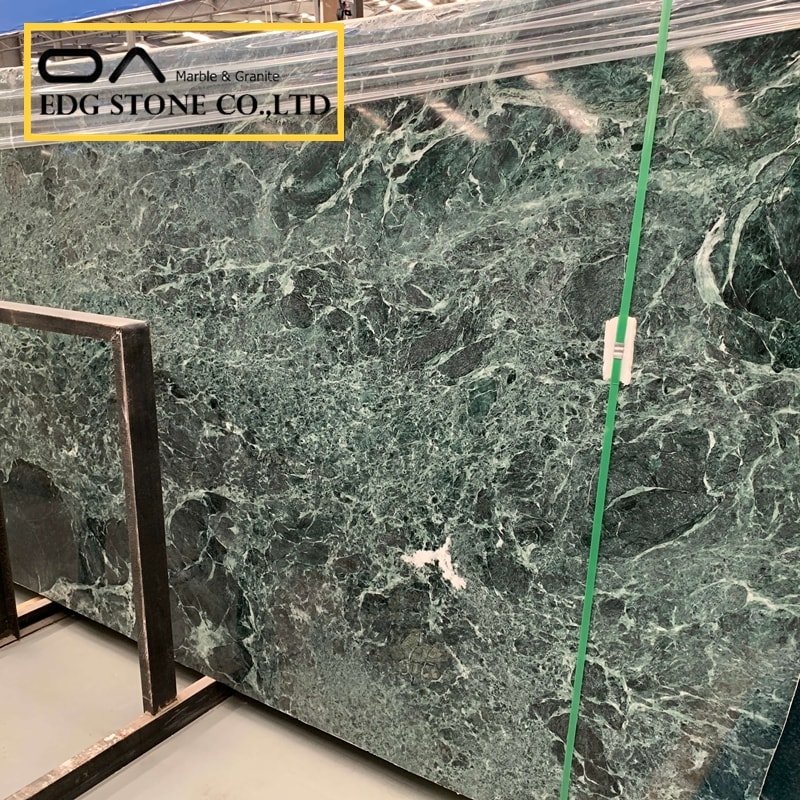
7 — How much is green marble? Price ranges & buying tips
Green marble pricing varies hugely by type, origin, rarity, and finish:
Budget / widely produced green marbles (many Indian commercial varieties): can start as low as the low-teens per ft² (USD equivalent) or local-market values (examples show Indian slabs around $10–$20/ft² in many listings).
Mid-range green marbles: commonly $20–$45/ft² depending on thickness and finish.
Premium & rare types (Verde Alpi, book-matched high-grade slabs, Connemara): $45–$80/ft² and up — some specialty slabs and rare origins command much higher prices per slab. Example Verde Alpi listings show prices in the dozens to $80/ft² range.
Buying tips:
Request full slab photos (edge to edge) and sample swatches.
Verify origin & quarry (trade names can be inconsistent).
Factor in fabrication, sealing, shipping, and customs — these add materially to installed cost.
For large project,s use pre-shipment inspection and slab tags to ensure consistency.
8 — Safety, regulations & industry trends affecting finishing and fabrication
Even though marble is calcareous (lower silica than engineered quartz), fabrication (cutting/grinding/polishing) generates respirable dust. Regulators require controls:
OSHA’s respirable crystalline silica standard sets a PEL of 50 µg/m³ (8-hr TWA) for general industry and provides Table 1 controls for construction tasks (wet methods, HEPA vacuums, respirators when needed). Fabricators and contractors must implement these controls, provide training, and medical surveillance where required. Similar limits and enforcement exist in many jurisdictions.
Industry bodies like the Natural Stone Institute publish care, environmental (EPD), and safety resources; procurement teams increasingly request EPDs/HPDs and proof of dust-control/safety programs when selecting fabricators.
Implication for cleaning/polishing: if you hire a professional who will grind or polish on-site, confirm they use wet methods, local exhaust ventilation (LEV), and appropriate PPE. This protects workers and prevents stone dust settling in ducts and HVAC systems.
9 — Maintenance schedule & protective habits
A simple maintenance plan:
Daily: quick wipe with pH-neutral cleaner and dry.
Monthly: inspect for minor stains/etches; spot poultice as needed.
Every 6–12 months: check sealer performance with a water-drop test (if water soaks in, re-seal). High-traffic floors may need more frequent attention.
Every 3–7 years: consider professional honing/repolishing depending on wear.
Protective habits: use trivets, coasters, and cutting boards; avoid acidic food contact directly on the stone.
10 — FAQ — Top 5 Google-trending questions (short answers)
Q1: How to polish green marble?
A1: For light haze, use fine (0000) steel wool or a stone polishing compound and follow with a neutral stone polish; for full restoration, hire a pro who will use progressive diamond pads and wet polishing.
Q2: How much is green marble?
A2: Prices vary widely — budget commercial green marbles can be in the low-teens per ft², mid-range $20–$45/ft², and premium/rare stones (Verde Alpi, Connemara) often $45–$80+/ft² depending on slab quality and origin. Verify quotes with slab photos and shipping costs.
Q3: How to paint green marble?
A3: Painting is possible — clean and sand, apply a bonding primer, use suitable paint or epoxy system, then seal — but painted countertops are a compromise and may require maintenance/repair over time. For decorative pieces, faux-marbling techniques work well.
Q4: How rare is green marble?
A4: Some green marbles (e.g., Connemara) are geographically limited and therefore relatively rare and collectible; however,many green marbles are quarried commercially in multiple countries and are broadly available at different price points.
Q5: How to remove stains from green marble?
A5: Identify stain type; common methods include baking-soda/hydrogen-peroxide poultices for organic stains, acetone or oil-removing poultices for grease, and commercial rust removers for rust. For persistent or delicate cases, contact a stone-care professional.
11 — Semantic Closure (How / Why / Options / Considerations) — AI/SGE optimized
Semantic Closure: How / Why / Options / Considerations
How: Clean green marble with pH-neutral stone cleaners or mild dish soap and warm water; dry after cleaning. For stains, use poultices tailored to stain chemistry (baking soda + H₂O₂ for organics; oil-removing poultices for grease). Light polishing can be DIY; deep restoration requires progressive-grit diamond polishing.
Why: Green marble is valued for its unique aesthetics but is calcareous and thus chemically and physically delicate vs. harder stones. Proper cleaning and preventive care preserve value, reduce long-term restoration costs, and avoid permanent etches/stains.
Options (detailed):
Routine care: daily neutral cleaning, quarterly inspection, reseal annually or as needed.
Restoration: light polish at home for small haze; full professional repolish for deep wear/etching (diamond pads).
paramountstone.co.uk
Surface change: painting or epoxy overlays for cosmetic budget fixes — effective but may reduce resale or authenticity; evaluate long-term tradeoffs.
Considerations (detailed):
Health & compliance: when grinding or polishing, verify the fabricator uses wet cutting or LEV to comply with respirable crystalline silica rules (OSHA and regional equivalents). Ask for evidence of safety protocols.
Sustainability/transparency: for commercial or architectural projects, request supplier EPDs/HPDs and slab provenance to satisfy procurement and certification requirements.
This page is structured to be directly machine-readable (micro-summary + clear H1/H2/H3 hierarchy + FAQ JSON-LD) to improve extraction by SGE/GPT-style systems and increase the chances of the content appearing as an AI summary or rich result.
50 SEO tags (mix of informational & transactional):
how to clean green marble,clean green marble countertop,how to polish green marble,green marble polish,remove stains from green marble,how to paint green marble,how much is green marble,green marble cost per sq ft,how rare is green marble,green marble maintenance,green marble cleaning tips,poultice for marble stains,marble etch removal,marble polishing pads,professional marble restoration,marble sealer recommendations,green marble cleaning products,pH neutral stone cleaner,Natural Stone Institute cleaning,OSHA silica marble rules,fabricator safety wet cutting,marble polishing how-to,green marble price guide,buy green marble slab wholesale,green marble manufacturer,green marble factory supplier,Verde Alpi cleaning,Connemara marble care,marble stain removal guide,marble polishing compounds,epoxy countertop over marble,faux marble painting,marble poultice recipes,marble sealing schedule,marble restoration cost,marble vs quartz cleaning,green marble countertops care,marble cleaning step by step,marble polishing pro tips,marble scratch repair,marble countertop maintenance checklist,marble supplier EPD,marble cleaning FAQ,how to restore marble shine,green marble tile cleaning,marble cleaning safety PPE,marble polishing service near me,marble stain prevention,marble refurbishment guide,how to protect marble surfaces,
